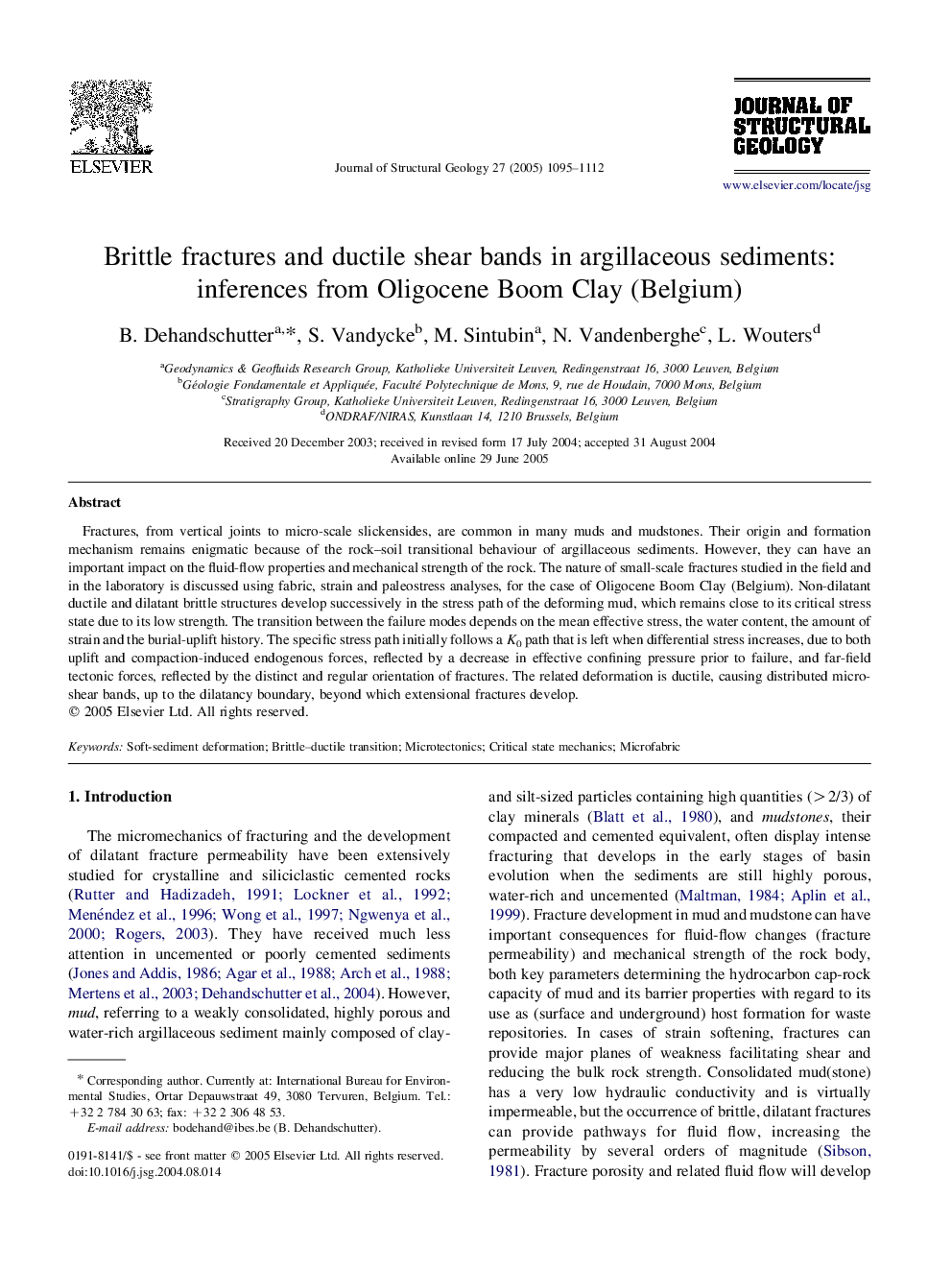| Article ID | Journal | Published Year | Pages | File Type |
|---|---|---|---|---|
| 9536583 | Journal of Structural Geology | 2005 | 18 Pages |
Abstract
Fractures, from vertical joints to micro-scale slickensides, are common in many muds and mudstones. Their origin and formation mechanism remains enigmatic because of the rock-soil transitional behaviour of argillaceous sediments. However, they can have an important impact on the fluid-flow properties and mechanical strength of the rock. The nature of small-scale fractures studied in the field and in the laboratory is discussed using fabric, strain and paleostress analyses, for the case of Oligocene Boom Clay (Belgium). Non-dilatant ductile and dilatant brittle structures develop successively in the stress path of the deforming mud, which remains close to its critical stress state due to its low strength. The transition between the failure modes depends on the mean effective stress, the water content, the amount of strain and the burial-uplift history. The specific stress path initially follows a K0 path that is left when differential stress increases, due to both uplift and compaction-induced endogenous forces, reflected by a decrease in effective confining pressure prior to failure, and far-field tectonic forces, reflected by the distinct and regular orientation of fractures. The related deformation is ductile, causing distributed micro-shear bands, up to the dilatancy boundary, beyond which extensional fractures develop.
Related Topics
Physical Sciences and Engineering
Earth and Planetary Sciences
Geology
Authors
B. Dehandschutter, S. Vandycke, M. Sintubin, N. Vandenberghe, L. Wouters,
